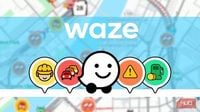When Google Maps first launched in 2005, it was a far cry from the digital atlas we know today. In fact, as recent social media posts and nostalgic retrospectives have revealed, its original version was so basic that it left many users in 2025 utterly baffled. According to Supercar Blondie, Google Maps’ debut only covered a handful of countries—primarily the United States, United Kingdom, and Canada—while the rest of the globe was simply chopped off the map. The contrast between then and now could hardly be starker.
Images circulating on Reddit recently show the original Google Maps interface, and the reaction has been a mix of amusement and disbelief. One commenter quipped, “That’s weird-looking world tour map… I mean, where is France, Australia, or Japan?” Others saw humor in the English-speaking focus of the early app, with another user joking, “It’s impressive how many people and continents emerged from the vast ocean in only two decades.” A third chimed in: “We’re going to reverse Columbus and discover the old world. Let’s go find some Indian spices.”
But for those who remember the early days, there’s a certain nostalgia. “I remember when you could ask for directions from LA to London and Google would tell you turn-by-turn driving directions to New York and then tell you to swim across the Atlantic Ocean to London,” one user recalled. It’s a reminder of just how far navigation technology has come—and how absurd the old days could be.
Fast forward to 2025, and Google Maps is almost unrecognizable from its humble beginnings. Today, the app boasts real-time traffic updates, satellite views that uncover even the most remote corners of the planet, and features that allow users to take virtual tours of iconic landmarks like The White House. As Supercar Blondie notes, “Not only can it find incredibly remote locations that would have otherwise stayed a mystery, you can even get free tours of the world’s biggest landmarks.” It’s no wonder that Google Maps has become such a staple in daily life, often used without a second thought.
Yet, as navigation technology has matured, another player has carved out a fiercely loyal following by taking a very different approach: Waze. As of September 2025, Waze stands out precisely because it doesn’t try to be everything to everyone. Instead, it focuses on one goal: getting you to your destination as quickly as possible, no matter what. According to MakeUseOf, “Waze doesn’t play it safe, and that’s the point.” While Google Maps might steer you along the most comfortable or scenic route, Waze acts like an impatient copilot, willing to take you through alleys, dirt roads, or winding mountain paths if it means shaving minutes off your estimated arrival time.
Waze’s secret weapon is its community. The app relies heavily on real-time reports from thousands of drivers, who flag everything from potholes and crashes to speed traps and stalled vehicles. As MakeUseOf explains, “When someone up ahead reports a police officer hiding on the shoulder, you’ll know instantaneously.” These alerts aren’t just submitted and forgotten; the system prompts other drivers to confirm or dismiss them, ensuring that the information stays accurate and up to date. This collaborative approach transforms Waze from a mere app into a living, breathing network of drivers watching out for one another.
In dense urban environments, where road conditions can change in the blink of an eye, Waze’s adaptability becomes a true superpower. Its rerouting logic is fast and confident, often adjusting your route within seconds of a slowdown being reported. “Waze can adjust your route within seconds of a slowdown being reported. It knows when something has shifted and recalculates accordingly—often so quickly you barely notice the change,” notes MakeUseOf. In contrast, Google Maps tends to be more cautious, waiting to verify incidents before updating routes. That lag can mean the difference between breezing through traffic and getting stuck in a jam.
Waze’s user interface is another area where it diverges sharply from Google Maps. The app is designed with drivers in mind, featuring bold, oversized icons and a layout that prioritizes key information like ETA, next turn, and current traffic conditions. “Buttons are large and easy to tap without taking your eyes off the road. Key information, such as ETA, next turn, and traffic conditions, is always front and center, never buried,” MakeUseOf points out. By contrast, Google Maps’ minimalist visuals may look sleek, but they can sometimes bury important alerts or make them easy to miss during high-pressure driving situations.
But Waze isn’t just about ruthless efficiency—it also injects a bit of fun into the driving experience. Users can customize the voice giving them directions, change their car icon, and even select a mood to display on the map. While these features are hardly essential, they do add a touch of personality to what could otherwise be a monotonous routine. As MakeUseOf puts it, “There’s value in fun, in that it breaks up the monotony. Whether it’s a pirate shouting commands or the latest celebrity Waze navigation voice, that absurdity can help lighten the mood.”
Despite its playful side, Waze is all business when it comes to navigating urban chaos. In cities where construction zones, traffic cops, and special events can reroute traffic at a moment’s notice, Waze’s real-time adaptability is invaluable. “You can almost see Waze thinking as it reroutes you mid-drive during extreme traffic. It reacts to last-minute shifts, tailors your detours in real time, and does it with a level of accuracy that feels like magic,” says MakeUseOf. The result is an app that thrives in gridlock, where every second counts and precision matters most.
It’s important to note, however, that Waze isn’t for everyone. If you’re looking to plan a trip, find the best-rated restaurants, or explore local attractions, Google Maps remains the go-to choice. Waze is laser-focused on driving, minimizing distractions and keeping your attention on the road. “Unlike Google Maps, Waze is designed to help you on the road, not for trip-planning at home. From the settings to the search options, its functionalities revolve around clarity and quick decisions, minimizing distractions so your attention stays on the road,” MakeUseOf explains.
Looking back at the evolution of navigation apps, it’s remarkable to see how far we’ve come since the days when Google Maps could only offer directions to a handful of countries—and sometimes suggested swimming across the Atlantic. Today, whether you prefer the comprehensive features of Google Maps or the fast, community-driven approach of Waze, there’s an app tailored to your needs. And as technology continues to advance, who knows what the next two decades will bring? Maybe, as Supercar Blondie suggests, we’ll soon be starting from scratch with a GPS map of the moon.




